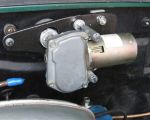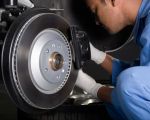How to Fix a Broken Power Steering Hose: A Step-by-Step Guide for Car Owners
A broken power steering hose can quickly turn an enjoyable drive into a stressful situation. Power steering is a crucial part of your vehicle's handling system, and when the hose fails, you may find yourself struggling to control the steering wheel, especially at low speeds. Whether you're a DIY enthusiast or simply a car owner looking to fix this issue, understanding how to address a broken power steering hose is essential.
In this article, we’ll cover the symptoms of a broken power steering hose, how to fix the problem yourself, and when it's best to call a professional towing service for help. We’ll also share some real-life stories and provide expert advice on auto rescue and towing services in case you find yourself in a difficult situation.
1. Understanding Power Steering Hose Issues
Before diving into the repair process, it’s important to understand what the power steering hose does and how it can break. The power steering hose is responsible for carrying hydraulic fluid from the power steering pump to the steering rack. When the hose is damaged, it can lead to fluid leaks, which in turn can cause difficulty steering your vehicle.
A broken or leaking power steering hose is often caused by wear and tear, rough handling, or exposure to extreme temperatures. Over time, the rubber or metal materials of the hose can deteriorate, resulting in cracks or holes. When this happens, the hydraulic fluid escapes, and the power steering system no longer functions properly.
Signs of a broken power steering hose include:
- Difficulty steering, especially at low speeds.
- Power steering fluid leaking from under the car.
- Whining noises when turning the steering wheel.
- Sudden jerking of the steering wheel during turns.
2. How to Fix a Broken Power Steering Hose
Repairing a broken power steering hose is a task that some car owners may be able to handle themselves, especially if they have a basic understanding of car repair. Below, we’ll walk you through the necessary steps to fix a broken power steering hose.

IMC powered by Parts Authority
139 Lafayette Dr, Syosset, NY 11791, USA
Step 1: Gather Your Tools
Before starting the repair, make sure you have the right tools. You’ll need:
- Wrench set
- New power steering hose
- Power steering fluid
- Jack and jack stands
- Drain pan
- Gloves
- Screwdriver
Step 2: Locate the Broken Hose
Start by lifting the front of the car using a jack and securing it with jack stands. Once the car is safely lifted, locate the power steering hose. This is usually found near the power steering pump and the steering rack, often running along the side of the engine.

Power Brake Exchange
2870 Aiello Dr, San Jose, CA 95111, USA
Step 3: Drain the Fluid
To avoid spilling power steering fluid all over your engine, it’s important to drain the system first. Place a drain pan underneath the power steering reservoir, and use a wrench to loosen the connections on the broken hose. Allow the fluid to drain fully before proceeding with the removal of the hose.
Step 4: Remove the Broken Hose
Once the fluid is drained, use a wrench or screwdriver to disconnect the broken hose from both the pump and the steering rack. Depending on your vehicle, there may be clamps or bolts that need to be removed as well. Be sure to keep track of any fasteners in case you need them for the installation of the new hose.
Step 5: Install the New Hose
Take the new power steering hose and carefully connect it to both the pump and the steering rack. Make sure that the hose is properly secured and that there are no kinks or twists. Once the hose is in place, tighten the connections with a wrench.
Step 6: Refill the Power Steering Fluid
Now that the new hose is installed, refill the power steering system with the appropriate fluid. Check your vehicle's manual to ensure you're using the right type of fluid for your car. Slowly add fluid, and then start the engine to allow the fluid to circulate. Turn the steering wheel a few times to help the fluid move through the system.
Step 7: Check for Leaks
With the engine running, carefully inspect the area around the new hose for any signs of leaks. If you see any fluid escaping, turn off the engine and tighten the connections. If the leaks persist, it might be worth consulting a professional mechanic.
3. When to Call a Professional Towing Service
While fixing a power steering hose might seem like a manageable task, not all car owners have the time or expertise to handle the job themselves. Additionally, if you encounter any difficulties during the repair, such as stripping the threads or failing to stop a leak, it’s crucial to seek professional help.
If you find yourself stranded with a broken power steering hose and you’re unable to repair it on the spot, calling a professional towing service is a wise option. Emergency towing companies, such as Rescue & Towing, specialize in quickly and safely transporting vehicles to a repair shop for further assistance. A towing service can also help you avoid driving with compromised steering, which could be dangerous.
Consider the following situations where it’s best to call a towing company:
- You’re unable to locate the source of the power steering issue.
- Your DIY repair isn’t working, and the car is still unresponsive.
- The leak is extensive, and you need immediate help.
- You are stranded in a remote location and need your car transported to a repair facility.
4. Real-Life Story: Emergency Towing for Power Steering Hose Repair
Last year, Mark, a regular customer of Rescue & Towing, found himself in a tricky situation when his car's power steering hose suddenly burst during a road trip. The power steering fluid leaked everywhere, and he couldn’t steer his car properly, making it unsafe to drive further.
Mark immediately called for roadside assistance, and within 30 minutes, a tow truck arrived to help. The professional towing team carefully loaded his car onto the truck and transported it to a nearby auto repair shop. The mechanics quickly replaced the broken hose, and Mark was back on the road in just a few hours.
This real-life story highlights the importance of knowing when to call for professional help. Sometimes, a towing service is the fastest and safest option to get you out of a sticky situation.
5. Why Choose Rescue & Towing for Your Emergency Needs
If you ever find yourself in need of urgent towing or roadside assistance, Rescue & Towing is your trusted partner. Their expert team is available 24/7 to provide prompt and reliable services. Whether it’s a broken power steering hose, a flat tire, or a more severe breakdown, they’ll ensure your vehicle gets to the right place quickly and safely.
Rescue & Towing offers a variety of packages for emergency towing services and auto rescue, making it easy for car owners to get the help they need. Don’t wait until you’re stuck on the side of the road—visit their website to learn more about their services and book your next roadside assistance plan.
Click here to explore Rescue & Towing’s services and be prepared for anything that comes your way!



























